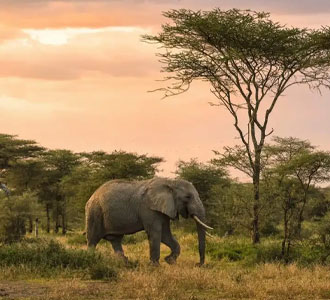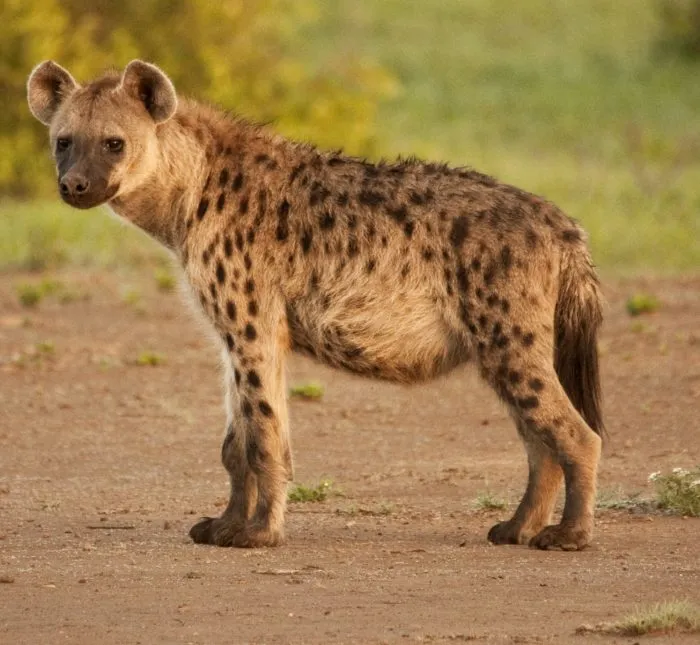-
Bus, Airlines
-
3 Stars Hotels
-
5,416 metres
-
Kathmandu
-
Feb, Mar, Apr & May
-
Eco-Tour, Hiking
-
All meals during the trek
-
English, Spanish, French, Chinese
-
Easy to Moderate
-
2-15
-
12
-
65
Overview
A life time memory honeymoon vacation Tanzania to Lake Manyara National Park, Ngorongoro Crater and Serengeti National Park
Highlights
- Trek to the world-famous Everest Base Camp
- Enjoy the amazing view of the Himalayas from Kala Patthar
- Travel through the Sherpa villages of Namche, Khumjung, Khunde, and Dingboche
- Visit Tengboche the biggest and oldest monastery n the region.
Itinerary
After arrival at the airport (Kilimanjaro / Arusha), your private driver guide will pick you up at the airport and transfer you to your accommodation for dinner and overnight awaiting for your safari departure on the following day
Early morning after breakfast, we depart to Tarangire National Park. The Park is named after the Tarangire River which runs through it. This ‘river of warthogs’ is the only source of water for wildlife in the region during the dry season. In places, the vegetation is quite dense, including elephant grass, acacia woodlands and lush groundwater forest. The Park is well known for its elephant families, which can often be seen congregating by the river. You may also see giraffe, bushbuck and hartebeest. These animals are closely followed by a range of predators, including lions and leopards. There are more breeding species of birds found in Tarangire National Park than anywhere else on the planet!
After Lunch and an extensive game drive, we head for our luxury partner lodges near Tarangire for dinner and overnight.
Early morning after breakfast, we depart to Lake Manyara National Park which is an unspoilt paradise and is best known for its abundance of birds and tree-climbing lions. The dramatic western escarpment of the Rift Valley forms the Park’s western border. To the east is the shallow, alkaline Lake Manyara. The lake covers a large area of the park, flooding and drying with the seasons and is home to thousands of flamingos during the rains. The name Manyara comes from the Maasai word ‘emanyara’, a popular plant which is used to build the protective enclosure around a family homestead (boma). The Park’s vegetation is diverse, ranging from savannah to evergreen forest. On your exploration of the park you may see giraffe, zebra, wildebeest, buffalo, elephant and if you are lucky; lions lounging in the trees.
After Lunch and an extensive game drive, we head for our luxury partner lodges in Karatu for dinner and overnight.
After early breakfast, you will descend down the crater which is almost 600m deep.
The Crater was created when a large volcano exploded and collapsed in on itself two to three million years ago. It is famous for both its geological delights and for being a natural reserve which is home to some of the densest large mammal populations in the whole of the African continent. The drive down the into the Crater is an adventure in itself and when you reach the
Early morning after breakfast, we depart to Serengeti National Park. The Serengeti is truly spectacular. It is famous for its vast open grasslands which allow for excellent sightings of wildlife. The Serengeti is Tanzania’s oldest National Park and it is also one of the oldest ecosystems on earth. Its climate and vegetation have remained largely untouched for millions of years. Whilst the Serengeti boasts abundant wildlife, it is perhaps best known for the annual Great Migration. Vast numbers of wildebeest; accompanied by large numbers of zebra and antelope move in an annual pattern, constantly seeking fresh grazing. The precise timing of the Migration is entirely dependent upon the rainfall patterns each year.
After Lunch and an extensive game drive, we head for our Tented partner lodges for dinner and overnight.
After breakfast, you will head straight to the airport to catch your flight to Zanzibar airport ZNZ and through (Stone Town) before travelling to the northern east coast of Zanzibar known as Kiwengwa. Kiwengwa Beach is located on the northeast coast of Zanzibar, 40 km from Stone Town. The sea-floor slope is smooth, the water deepens slowly and the tides are strong. The coast and bottom are covered with soft snow-white sand, tall palm trees grow around the perimeter. The Indian Ocean is warm, the azure water is clean and clear. Kiwengwa was originally a small fishing village without communication and tourist infrastructure. In recent years, authorities have given permission to build hotels, restaurants, cafes, bars and shops. Instead of the old dilapidated fishermen huts, guest houses, guesthouses, bungalows began to appear. The Maasai tribes own most of the stores and sell African souvenirs. Today Kiwengwa is a popular developed resort complex where vacationers from all over the world have fun.
After breakfast and a bit of relaxation at the hotel in Zanzibar, you will be transferred straight to the airport / ferry which mark the end of your epic adventure.
Cost
The Cost Includes
- Pick-up or Drop-off service from and to Airport(in our own vehicle)
- Transportation to and from!!
- Food all along the trip(Breakfast, Lunch, Dinner and a cup of coffee or tea) and accommodations during the trip in hotels with family environment
- Transportation, food, accommodation and insurance of Guide during the trip
- Down jacket, all-season sleeping bag, duffel bag and trekking map(in case if you don’t have your own. Down jacket, sleeping bag and duffel bag must be returned after completion of the trip)
- First Aid Medical Kit(Your guide will carry the Medical Kit but we also advise to bring yourself for your own use, as far as possible)
- All the required permits and paperwork
The Cost Excludes
- International Airfare
- Visa Charges
- Hotel Expenses(In Kathmandu, some packages do include hotel expenses)
- Your travel and medical insurance
- Personal Expenses such as shopping, bar bills, hot shower, telephone, laundry, titbits etc
- Food and accommodations in Kathmandu
- Services not mentioned or not promised by the agent/agency
- Emergency expenses such as expenses on chartered helicopter.
Frequently Asked Questions (FAQs)
On average, you walk about 4 to 6 hours per day. One or two days can be as less as 3hrs and one or two days can be as long as 7hrs.
The highest altitude reached is 4190m. This is the elevation of Annapurna Base Camp. ABC is the highest we will climb in this trek.
Yes, you can charge batteries en route. Charger should be brought. There are hot shower facilities as well. You may have to pay a certain amount for both ($1-$2). Negotiate. Also, a hot water facility could be free at a lower elevation.
No. There are no ATMs on this trek route. You will have to draw enough cash in Pokhara or Kathmandu. There are a number of ATMs in these cities. Everything is paid in Nepali rupees. So money should be exchanged before the start of the trek.
Yes. The Internet can be accessed in most places. Sometimes, there might be some technical problems. The Internet in Nepal is not as fast as you are used to and at times you can just lose connection.
Not really. It depends on you. If you want, ABC trekking can be done independently. You could hire a guide and a porter by yourself instead of going through an agency or not hire a guide at all. Although, not having a guide can be a little problematic during the offseason.
It really depends on you. Is it your first time in Nepal? How confident are you of being able to find your way around? How pressed on time are you? If you go through an agency, it will be costlier but everything will be planned. You will only have to come, trek and return.
For the Annapurna region, pay for guides range from $20 to $30 per day and porters take $15 to $25 per day.










